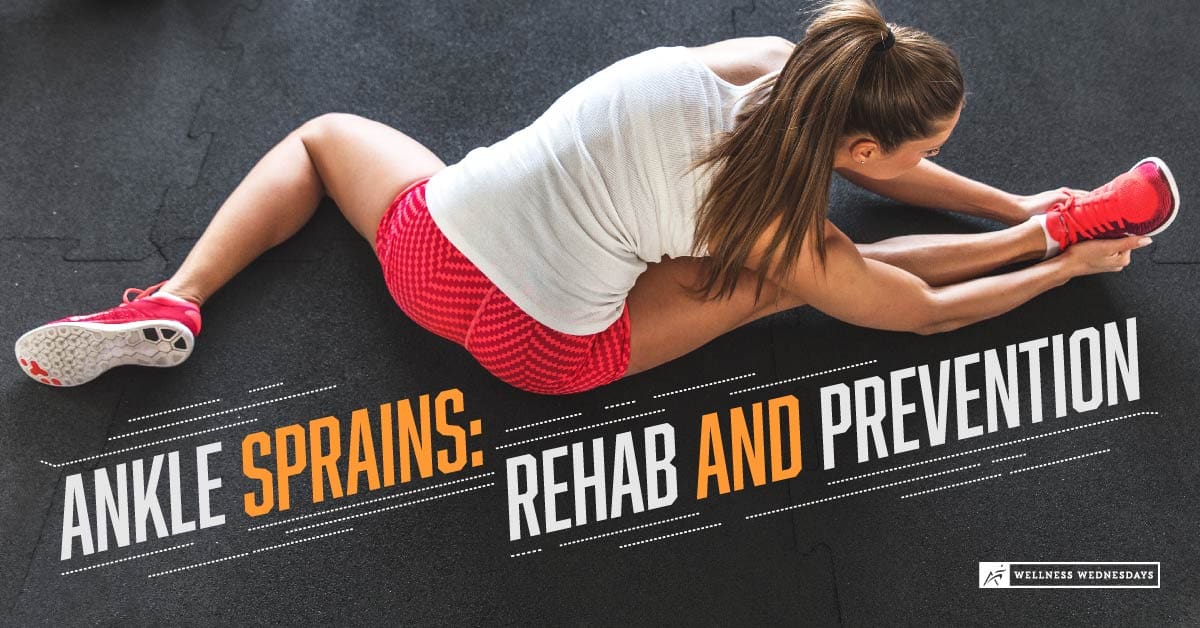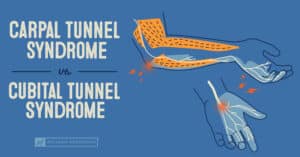If you’ve ever rolled or twisted your ankle awkwardly after a misstep, you’ve likely experienced joint pain from the ankle’s ligaments suddenly stretching. Ankle sprains occur when these ligaments become overstretched and torn.
Ankle sprains are very common injuries in the US, with over a million cases reported each year. They are some of the most common injuries people face when participating in various sports that require multifaceted movements. Because the ankle is such a complex and fragile joint, and a critical structure to the body’s mobility and support, many athletic sports and physical movements carry a higher risk of ankle injuries for athletes. Movements like running, jumping, and pivoting can lead to an ankle sprain if the athlete trips or falls.
Why Ankle Sprains Occur
Most people experience ankle sprains when their feet are inward or inverted, and when their feet are aimed downward at an angle, such as when balancing on toes or coming down from a jump.
Fortunately, most minor sprains will take anywhere from two to four weeks to heal. The bad news is that once you suffer from an ankle sprain once, you’re more likely to roll your ankle later and risk damaging it even more. If you’re an athlete, or just like to stay physically active, chances are you’re feeling pressured to get back to your activities quickly after an ankle sprain has healed.
Unfortunately returning to an activity without rebuilding enough strength and support in the injured joint could lead to another, more severe injury, which may come with an even longer estimated recovery time.
Flexibility, strength, and balance are the keys to keeping your ankles healthy and injury free. Even though you’re more likely to injure your ankle again after an initial injury, there are some steps you can take to build up your resistance to future ankle sprains.
How To Prevent Ankle Sprains
1. Stretch
Once you’re able to move your ankle without pain, you’ll want to start stretching your Achilles tendon and calf muscles. These strong muscles are attached to your ankle and supply the ankle with power and force. Stretching plays a critical role in regaining your mobility, flexibility, and range of motion. It’s ideal to stretch at least once a day to prevent stiffness and improve your flexibility.
2. Strengthen
You want to start rebuilding the strength in your ankle joint and surrounding muscles once you’re able to stand without increased pain or swelling. The timing for starting a strengthening regimen for rehab typically varies by severity of the sprain, and you should talk to your doctor about when to start strengthening exercises before attempting to do them. Below is an ankle strengthening exercise you can do at home to improve your leg and calf strength and increase your ankle’s resistance to injury. All you need is a resistance band and a chair.
Eccentric tibialis posterior with band:
– Sit down and cross your foot over the other thigh.
– Wrap a band around your elevated foot and step on the other end of the band with your other foot on the floor.
– Ensure there is a mild tension on the band when your foot is in neutral.
– With your hands, raise your foot up.
– Lower the foot back into the starting position slowly against the pull of the band.
– It’s very important to control the foot-lowering movement and make the movement slow and strong.
– Complete 2 sets of 10 repetitions.
*Disclaimer: Always consult with your doctor before starting any exercise program. If you experience any numbness, tingling or reproduction of your symptoms, please contact your doctor. Stop the exercise immediately if you experience any pain, tingling, or difficulties performing this exercise*
3. Balance
Good balance is crucial to keeping your ankles pain free. Even if your ankles have regained their strength and flexibility, you still risk another ankle injury if you’re not practicing your balancing skills. Improving your balance reduces your chances of falling and enhances your muscle memory to keep you upright and stable. One great way to touch up on your balance is through yoga. Yoga has many benefits, including a few excellent techniques for developing and correcting your balance. Many gyms around the country offer yoga classes, and joining a yoga class as part of a group exercise comes with its own set of health benefits. Yoga also provides some unique stretches to alleviate tightness and keep your body flexible.
Airrosti Enhances Ankle Sprain Recovery
Even though we do strive to help you recover as quickly as possible, your body still needs to take the time it needs to recover its strength and stability after an injury. It’s important to return to your activities gradually and prepare your body ahead of time by practicing the movements necessary for your job or sport. By progressively working yourself back up to your former ability, you can significantly reduce your risk of another ankle sprain down the road.
If an ankle sprain or lingering pain is keeping you on the sidelines and away from the activities you love, schedule an appointment with Airrosti today! Our expert providers will help rapidly speed up the recovery of your injury and are dedicated to getting you back on track to doing what you love, pain-free.
Read our Medical Disclaimer here.










